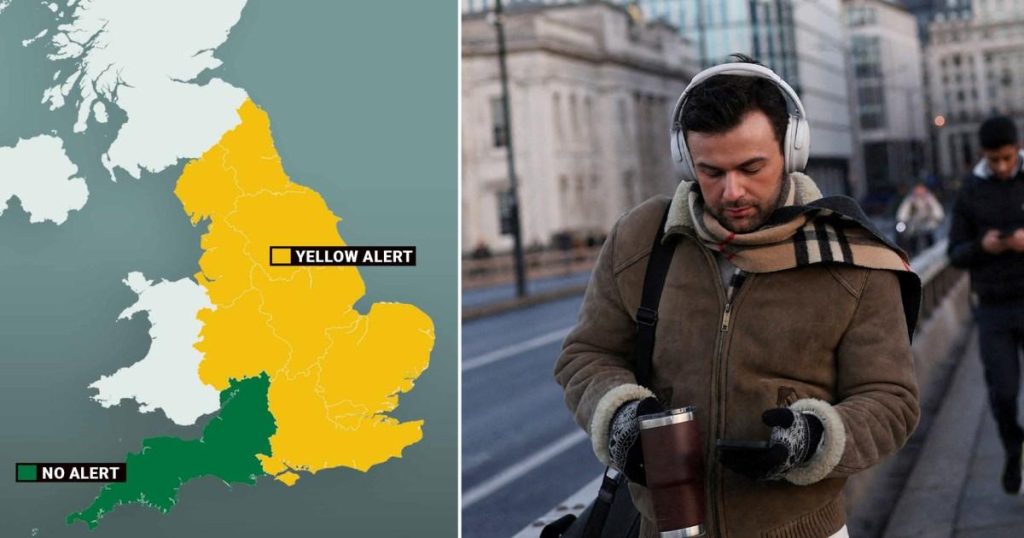A yellow cold weather health alert, the lowest of a three-tiered system, has been issued by the UK Health Security Agency (UKHSA) for a majority of England, excluding the southwest region. This alert, effective from the present day until Tuesday, signifies that while the general population is unlikely to experience significant adverse effects, vulnerable groups, such as the elderly and individuals with pre-existing health conditions, could be impacted by the drop in temperatures. This system, operating in conjunction with the Met Office, serves primarily to forewarn health and social care providers, enabling them to implement preventative measures and prepare for a potential increase in service demands. It also acts as a broader public service announcement, encouraging those facing difficulties, such as fuel poverty, to seek assistance. The alert system is active annually from November 1st to March 31st, with provisions for issuing “extraordinary alerts” should cold weather occur outside this timeframe.
The anticipated temperature dips are projected to reach -1°C overnight in certain areas of the northeast, while the north, midlands, and east can expect lows of around 1°C. London and the southern regions will experience slightly milder overnight temperatures, hovering around 2°C. Daytime temperatures are expected to be relatively moderate, reaching approximately 5°C to 6°C in most parts of the country over the next few days, with a peak of around 7°C expected on Monday. While these temperatures represent a chilly spell, they are significantly less severe than the conditions experienced earlier in the month when snowfall caused widespread disruption across much of northern England. The current forecast indicates a largely dry and cloudy period for England and Wales, with a noticeable chill in the air. Scotland and Northern Ireland may experience some patches of rain.
The UKHSA’s proactive approach in issuing this yellow alert emphasizes the importance of preparedness and community support during periods of cold weather. This early warning system allows health and social care services to mobilize resources, ensuring that vulnerable individuals receive the necessary care and assistance to cope with the lower temperatures. This may include providing warm spaces, checking in on elderly or isolated individuals, and offering advice on managing health conditions in cold weather. The alert also serves as a reminder to the wider public to be mindful of those who may be struggling with the cold, especially those experiencing financial hardship. Encouraging people to seek help if needed reinforces the importance of community solidarity and ensures that no one is left to endure the cold weather alone.
The primary purpose of the cold weather alert system is to preempt potential health issues that can arise from exposure to cold temperatures, particularly among vulnerable populations. Cold weather can exacerbate existing health conditions, such as respiratory illnesses and cardiovascular problems, and can increase the risk of hypothermia. By alerting health services in advance, the UKHSA enables them to proactively address these potential health risks and mitigate the impact of cold weather on the most susceptible members of the community. This early warning system plays a crucial role in protecting public health and ensuring the well-being of those most at risk during periods of colder weather.
The weather forecast, as provided by the Met Office, predicts a predominantly dry and cloudy spell for England and Wales throughout the alert period, although temperatures will be noticeably colder. While Scotland and Northern Ireland may see some rainfall, most of the UK will remain dry. This predominantly dry forecast signifies that the primary concern of the cold weather alert is the low temperatures themselves, rather than any accompanying precipitation. This focus on temperature emphasizes the importance of adequate heating and insulation, particularly for vulnerable individuals who may be more susceptible to the effects of cold.
Furthermore, the relatively mild daytime temperatures offer a slight reprieve from the colder overnight conditions, suggesting that the most critical period for vigilance and support will be during the nighttime hours. This highlights the importance of ensuring that vulnerable individuals have access to warm and safe environments overnight and that support services are prepared for increased demand during these periods. The combination of the yellow alert and the specific weather forecast allows for targeted interventions and support, ensuring that resources are directed where they are most needed.




